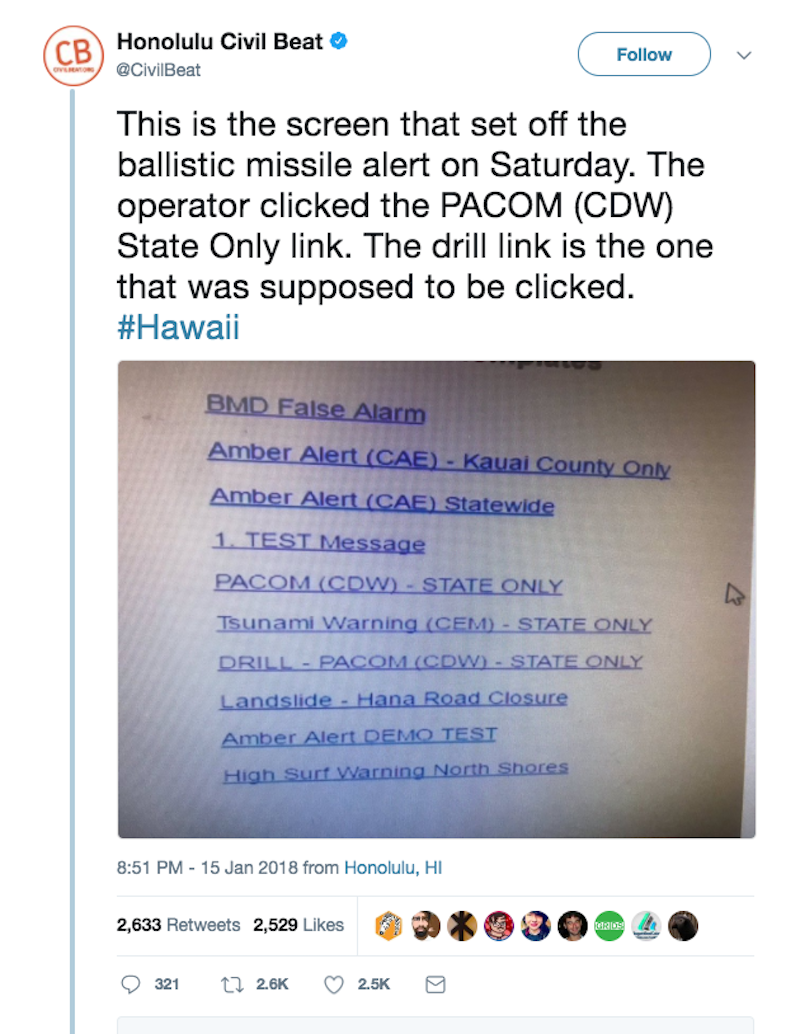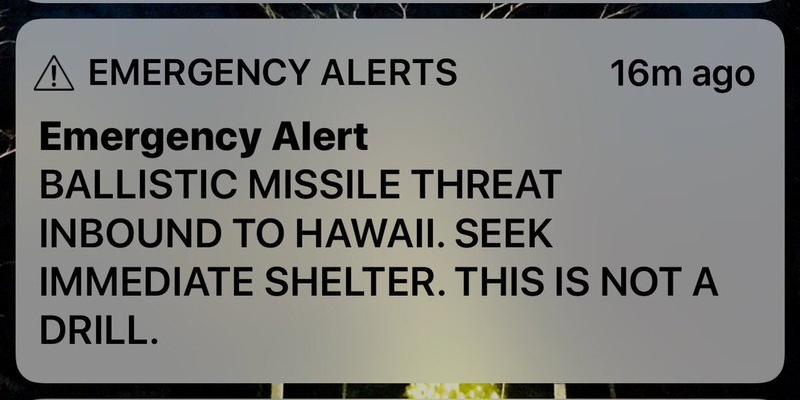- A photo of the poor user interface used by the operator who sent a terrifying alert to Hawaii residents on Saturday telling them about an inbound ballistic missile has been released.
- The interface is unclear and features links to various kinds of alerts that look similar to one another.
- The operator who made the error has been reassigned but not fired.
- Hawaii’s governor and the Emergency Management Agency have expressed regret about the false alarm and said it would not happen again.
It looks like a poor user interface might be partly to blame for the false ballistic missile alert that caused widespread panic in Hawaii on Saturday.
A newly released photograph of the screen that emergency-alert operators use to issue statewide alarms shows a confusing interface that relies on technical language, unclear shorthand, and a variety of single-color links for everything from county amber alerts to statewide tsunami warnings that look incredibly similar to one another.
The photo of the interface was obtained by the Honolulu Civil Beat.

The two links related to ballistic-missile bombardments - labeled PACOM (CDW) - STATE ONLY and DRILL - PACOM (CDW) - STATE ONLY - are not immediately identifiable within the system and are separated by a tsunami-related alert.
According to the head of Hawaii's Emergency Management Agency, Vern Miyagi, the operator had to answer an "Are you sure?" prompt before releasing the alert.
The false alarm sent to every person in Hawaii on Saturday morning was triggered when an operator clicked the link to a real alert instead of the link to a emergency drill.
"A missile may impact on land or sea within minutes. This is not a drill," the alert read.
It took operators 38 minutes to issue another alert telling people it was a false alarm, but the person realized he had made a grave mistake within minutes of issuing the alert. The newly added link to this "false alarm" feature is the BMD False Alarm button at the top of the interface photograph.
But despite the hugely consequential error, Miyagi said the operator would not be fired and will instead be reassigned.
"This guy feels bad, right. He's not doing this on purpose - it was a mistake on his part and he feels terrible about it," Miyagi told reporters.
Hawaii Gov. David Ige issued a formal apology following the weekend mishap, and vowed to never let such a scenario happen again.
"On Saturday, Hawai'i's residents and visitors experienced an unfortunate situation that has never happened before and will never happen again - a false alert issued by the Hawai'i' Emergency Management Agency that a ballistic missile was on its way to the Hawaiian Islands," Ige's statement read. "On behalf of the State of Hawai'i, I deeply apologize for this false alert that created stress, anxiety and fear of a crisis in our residents and guests."

